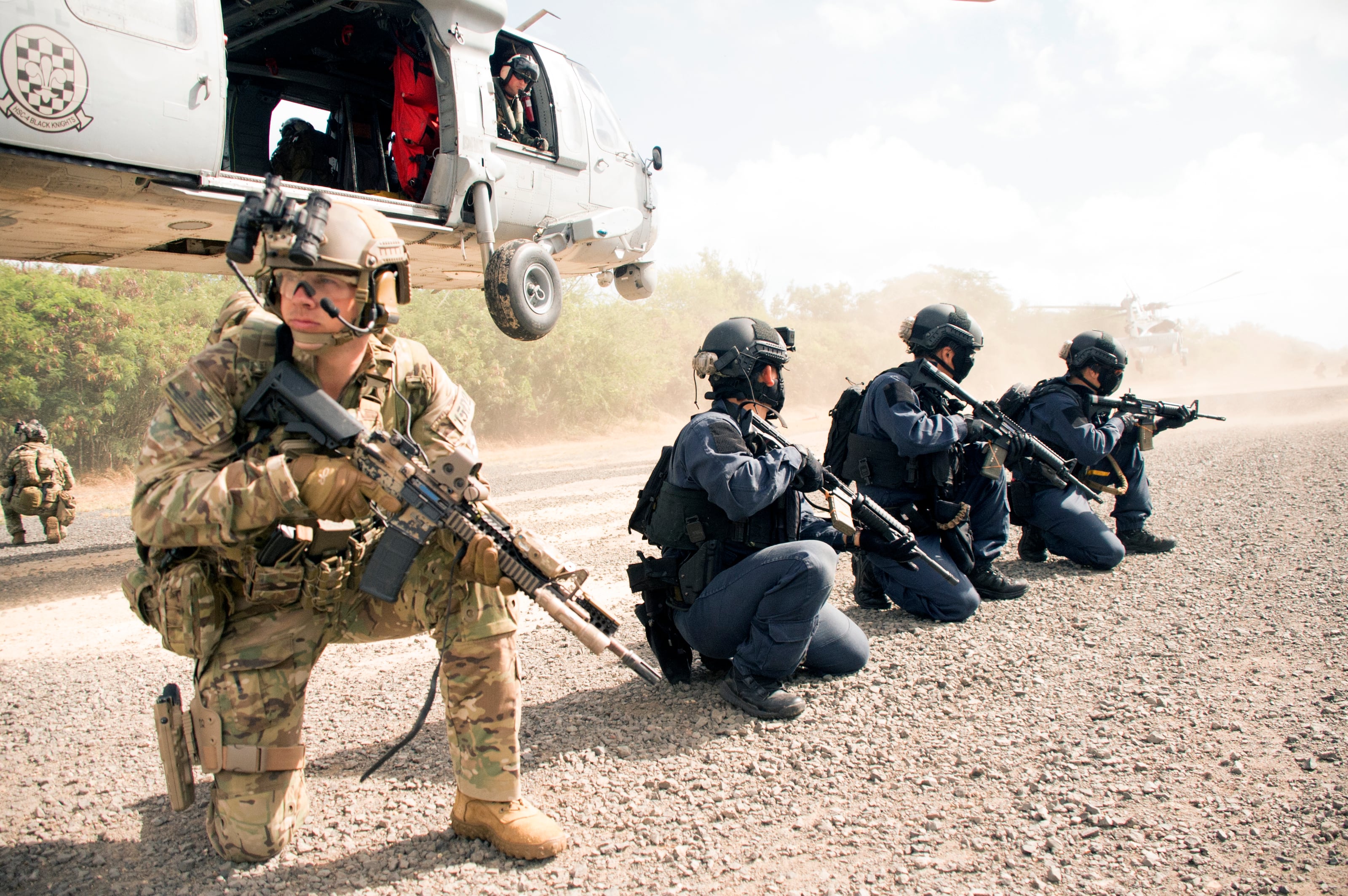The Army is looking to make good on its promise to align its Security Force Assistance Brigades to geographic combatant commands, the service secretary confirmed this week.
As early as the end of this year, SFAB advisers will be available to go to Asia to support local militaries and court new partners— a cornerstone of the strategy in the region.
“We’re going to have one available for the Pacific,” Army Secretary Ryan McCarthy said at a Defense Writers Group breakfast on Wednesday. “I’m sure the [U.S. Indo-Pacific Command] commander will put it in the book and ask for it.”
The Army will regionally align an SFAB to the Indo-Pacific in 2021. A small element will be aligned in the early part of the fiscal year, which could mean as early as November and December. Then the full SFAB will be available by the 4th quarter, said Lt. Col. Driece M. Harris, a spokeswoman for the secretary.
Although the initial focus is on the Pacific, McCarthy said that SFABs will also be regionally aligned to commands overseeing Africa, Europe and Latin America. “That’s something we’ll work out with the secretary of defense to ensure that lines up to meet national objectives," he added.
Service officials haven’t identified which SFAB will be made available to Indo-Pacific leaders, but McCarthy said the service will have the brigades “regionally-aligned” to areas of the world, similar to how Special Forces Groups are intended to work. The 5th SFAB is located at Joint Base Lewis-McChord, Washington, an area already suited for projecting forces into the Pacific. The Army’s 1st Special Forces Group is stationed at the same post and is already focused on operations in Asia.
RELATED

“You can have these units that are right around the country and they line up with a combatant command and they really understand the area of operations and the cultural, professional types of military education,” McCarthy said. “What we’re doing is providing the capability, having it in the queue to be ready to go and ultimately lining them up so there’s consistency in their performance.”
The SFAB concept was originally designed to be available all over the world. But the first three brigades that deployed were tapped to train and advise Afghan Army kandanks ― battalion-sized formations.
Those deployments aren’t necessarily over, however.
“Just because they’re aligned to Africa or Europe, doesn’t mean they aren’t going to go to Afghanistan,” McCarthy added. “At the end of the day, if we have troops in contact — we have a commander that needs a capability — [the secretary of defense] can pull forces from anywhere in the world. And maybe at the dismay of a combatant commander in another region, but they’re going wherever the sound of the guns are.”
It’s unclear how deployments to Afghanistan will impact the adviser missions elsewhere in the world. However, the service has planned for a total of six SFABs. Five will be in the active duty force and one will belong to the Army National Guard.
McCarthy said he doesn’t know the pacing on a potential drawdown of U.S. troops in Afghanistan. He added that Army Gen. Austin Miller, commander of U.S. forces and the NATO mission in the country, was happy with the SFABs’ performance in the country thus far.
“If you were to talk to Gen. Miller, I can guarantee you it will be part of his architecture going forward,” McCarthy said.
The 1st SFAB’s deployment to Afghanistan highlighted some challenges when it comes to recruiting and retention, according to John F. Sopko, who leads the Special Inspector General for Afghanistan Reconstruction, or SIGAR.
“Adviser roles continue to be seen as not career enhancing in the military, which contributes to high attrition rates — up to 70 percent for the 1st SFAB,” Sopko said at a Washington, D.C. event in July.
High attrition rates limit continuity and institutional memory, which is needed to make the units a long-term way to train partner nations’ forces.
The SFABs’ yearly attrition should be countered by phasing in incentives for Army personnel volunteering for the mission, recommended SIGAR’s lessons-learned report released this summer.
Kyle Rempfer was an editor and reporter who has covered combat operations, criminal cases, foreign military assistance and training accidents. Before entering journalism, Kyle served in U.S. Air Force Special Tactics and deployed in 2014 to Paktika Province, Afghanistan, and Baghdad, Iraq.



